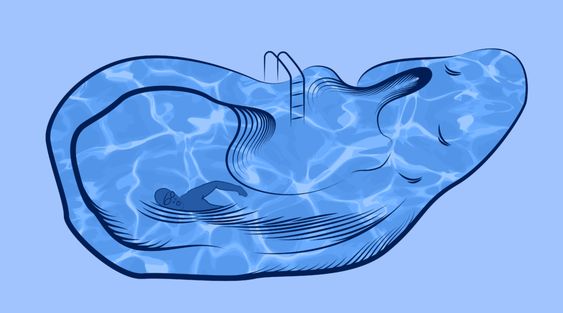Introduction
Swimmer’s ear, also known as otitis externa, is an infection of the outer ear canal, the tube that runs from your eardrum to the outside of your head. It’s often caused by water that remains in your ear after swimming, creating a moist environment that aids bacterial growth. However, you don’t have to be a swimmer to get swimmer’s ear.

Anyone can develop otitis externa, and it can be caused by a variety of factors, including:
- Bacteria or fungi: The most common cause of swimmer’s ear is bacteria, but fungi can also be responsible.
- Moisture: Water that gets trapped in the ear canal after swimming or bathing can create an ideal environment for bacteria and fungi to grow.
- Skin irritation: Scratching or cleaning your ears too aggressively can irritate the skin and make it more susceptible to infection.
- Allergies: Allergic reactions to shampoos, soaps, or other products can also trigger swimmer’s ear.
Symptoms of Swimmer’s Ear
The symptoms of swimmer’s ear can vary depending on the severity of the infection. Mild cases may only cause itching and redness, while more severe cases can be extremely painful. Common symptoms include:
- Itching inside the ear
- Redness and swelling of the ear canal
- Pain, especially when you touch your ear
- Drainage of fluid from the ear
- Muffled hearing
- Fever
If you experience any of these symptoms, it’s important to see a doctor to get a diagnosis and treatment.
Treatment of Swimmer’s Ear
Treatment for swimmer’s ear typically involves:
- Cleaning the ear canal: Your doctor will carefully clean the ear canal to remove any debris, discharge, or excess earwax.
- Eardrops: Medicated eardrops are typically prescribed to kill bacteria or fungi. These drops may contain antibiotics, antifungals, or steroids to reduce inflammation.
- Pain relievers: Over-the-counter pain relievers such as ibuprofen or acetaminophen can help manage pain and fever.
- Avoiding water: It is crucial to keep your ears dry while the infection heals. This means avoiding swimming, showering without protecting your ears, and using earplugs when necessary.
With proper treatment, swimmer’s ear typically clears up within a week or two. However, it is important to follow your doctor's instructions carefully and complete the full course of treatment. If your symptoms don't improve or worsen, consult your doctor.

.jpg)